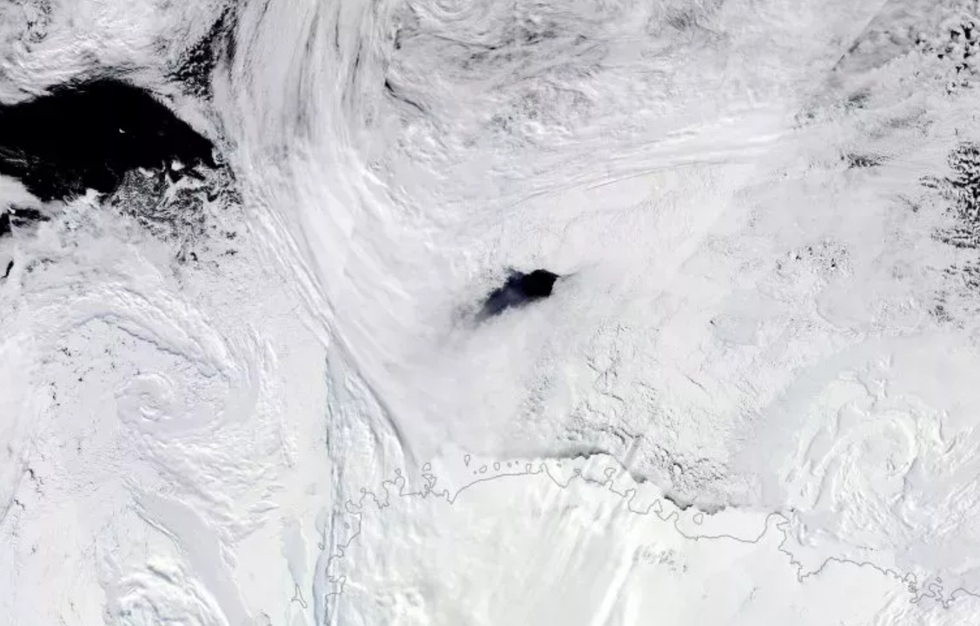Science & Tech
Harry Fletcher
May 03, 2024
An Iceberg As Large as London Just Broke Off of Antartica, and …
WochIt Media / VideoElephant
Antarctica has brought us all sorts of unexpected stories over recent times, and now there’s another which is raising eyebrows across the scientific community.
In case you missed it, conspiracy theorists have been turning their attention to Antarctica more than you’d expect recently – first in the case of the strangest natural phenomena of “bleeding waterfalls” and also the mystery of a so-called “pyramid” emerging in the ice.
Now, experts have been focusing on an enormous hole which mysteriously opened eight years ago [viaIFLScience].
Back then, in 2016 people couldn’t explain what was happening when a hole formed in the ice in Antarctica’s Weddell Sea, but a new study might have just solved it.

The hole itself is enormous, and measures twice the size of Wales. It’s known as a polynya, which is a phenomenon defined as areas of open water appearing within sea ice.
The hole, named the Maud Rise Polynya, was the biggest recorded in four decades. At the time, it was explained as having formed due to the impacts of a storm and unexpected ocean conditions.
However, new research published open access in Science Advances suggest that the polynya actually came about as a result of a specific current and its impact.
As the researchers state, the circular current known as the Weddell Gyre, which brought warm and salty water the surface after a period of strong currents from 2015-2018.
Professor Fabien Roquet of the University of Gothenburg in a statement: “This upwelling helps to explain how the sea ice might melt. But as sea ice melts this leads to a freshening of the surface water, which should in turn put a stop to the mixing. So, another process must be happening for the polynya to persist. There must be an additional input of salt from somewhere.”
Professor Sarah Gille of the University of California San Diego also said: "The imprint of polynyas can remain in the water for multiple years after they’ve formed. They can change how water moves around and how currents carry heat towards the continent. The dense waters that form here can spread across the global ocean.”
Sign up for our free indy100 weekly newsletter
How to join the indy100's free WhatsApp channel
Have your say in our news democracy. Click the upvote icon at the top of the page to help raise this article through the indy100 rankings
Top 100
The Conversation (0)














